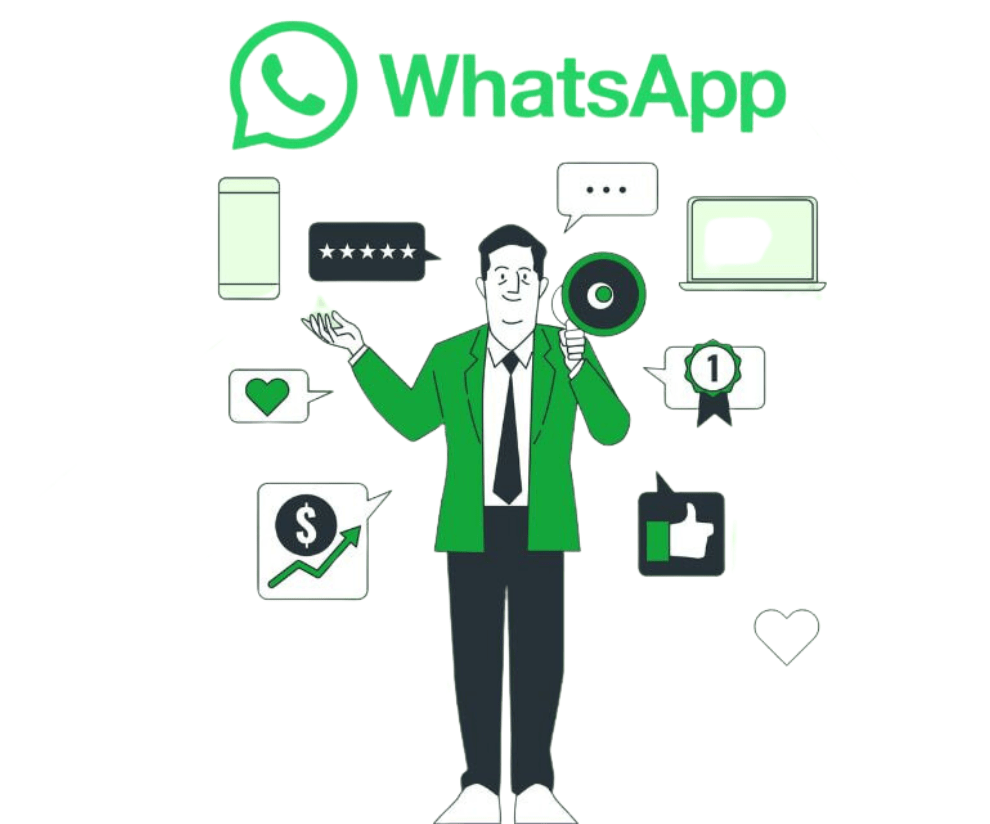
In an age where personalized communication is key to customer satisfaction, WhatsApp has emerged as a powerful tool for enhancing engagement. With its widespread use and direct nature, WhatsApp offers businesses a unique platform to connect with customers on a more personal level. Personalizing your WhatsApp messages not only helps build stronger relationships but also boosts customer loyalty and satisfaction. Here’s how you can tailor your messages to achieve better customer engagement with the best whatsapp marketing service provider in Thane.
1. Use the Customer’s Name
Addressing customers by their name is a simple yet effective way to personalize your communication. It makes the interaction feel more genuine and less automated. Ensure that your CRM system is set up to capture and store customer names so you can easily incorporate them into your messages.
2. Segment Your Audience
Not all customers are the same, and their needs and preferences can vary significantly. By segmenting your audience based on factors like purchase history, location, or behavior, you can send targeted messages that are relevant to each group. For instance, you can send special offers on winter wear to customers in colder regions and exclusive discounts on summer products to those in warmer areas.
3. Tailor Content to Customer Preferences
Understanding your customers’ preferences allows you to tailor your content accordingly. If a customer frequently browses a specific category on your website, send them updates or offers related to that category. This level of customization shows that you’re attentive to their interests and can significantly increase engagement.
4. Create Personalized Offers and Discounts
Personalized offers and discounts can make customers feel valued and appreciated. Instead of sending generic promotions, use data insights to create special deals based on individual customer behavior. For example, offer a discount on a product that a customer has shown interest in but hasn’t yet purchased.
5. Use Dynamic Messaging
Dynamic messaging involves creating messages that adjust based on user interaction. For example, if a customer has abandoned their cart, send a follow-up message with a reminder or a special discount to encourage them to complete the purchase. This approach not only personalizes the experience but also drives action.
6. Implement Chatbots for Personalized Interactions
Chatbots can be programmed to provide personalized responses based on user inputs and previous interactions. They can offer tailored recommendations, answer specific queries, and even resolve issues based on customer data. Ensure your chatbot is well-designed to handle various scenarios and provide a seamless user experience.
7. Gather and Utilize Feedback
Regularly seek feedback from your customers and use it to refine your messaging strategy. Understanding their preferences and pain points allows you to craft messages that address their specific needs. This approach helps in building a stronger connection and demonstrates that you value their input.
8. Maintain a Conversational Tone
A conversational tone can make your messages feel more personal and engaging. Avoid using overly formal language and instead opt for a friendly and approachable style. This makes your communication feel more human and relatable.
9. Provide Timely Responses
Timeliness is crucial in personalized communication. Ensure that your responses are prompt and relevant to the customer’s query or action. Quick replies not only enhance the customer experience but also show that you are attentive and committed to providing excellent service.
10. Monitor and Analyze Engagement
Regularly monitor the performance of your personalized messages and analyze engagement metrics. This helps you understand what strategies are working and where improvements are needed. Use this data to continuously refine your approach and enhance customer engagement.
Incorporating these personalization strategies into your WhatsApp messaging can significantly improve customer engagement. By addressing customers by name, tailoring content to their preferences, and providing timely responses, you create a more meaningful and engaging experience. As customer expectations continue to evolve, staying ahead with personalized communication will set your business apart and foster stronger customer relationships.